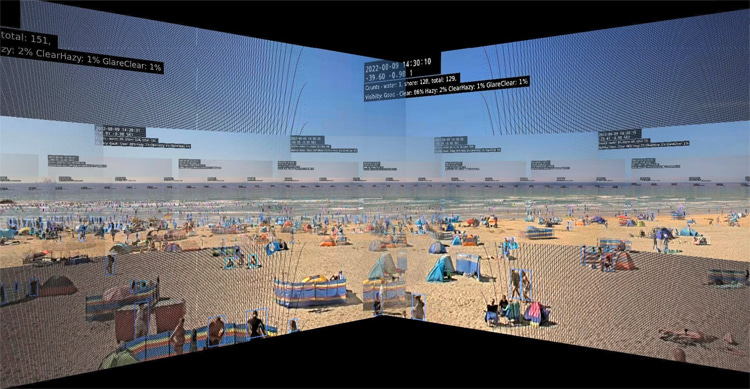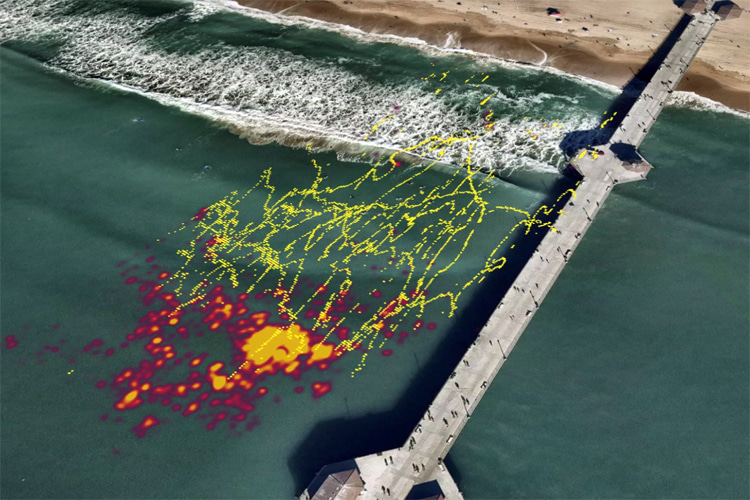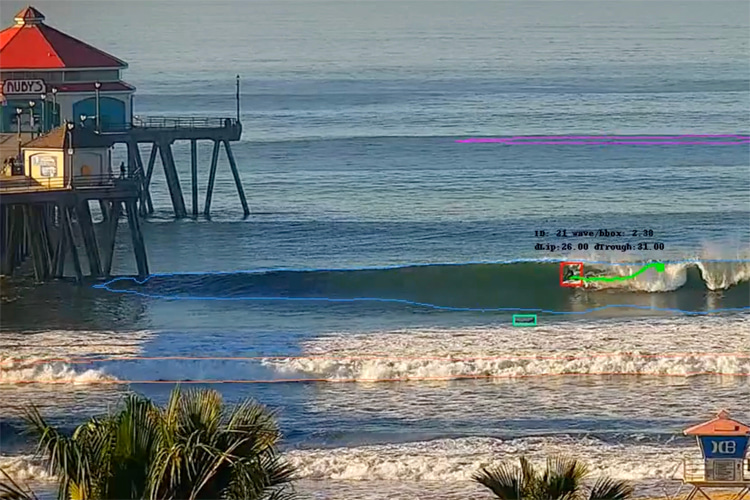SurfZone AI is the new cutting-edge coastal surveillance and analysis product offered by the veteran ocean monitoring and surf forecasting company Surfline.
With a legacy spanning 35 years, Surfline has evolved from catering to surfers and beach enthusiasts with live condition monitoring to providing a comprehensive suite of services through SurfZone AI.
The new service Surfline\Wavetrak, Inc. aims to address a new market using the mother company's data science, machine learning, and camera installation knowledge.
The project has been collecting data labeled since 2019 at a rate of 24 billion frames of video per year.
This data allows for very specific analysis and outputs on paddling versus sitting time, tracking crest and trough to determine wave height, lifeguard coverage needs, etc.
But what exactly does this new venture make available to its customers? Are you about to witness the Big Brother of Surfing watching all over the surfing community?
Camera Installation and Management
SurfZone AI provides full-service camera installation and management, deploying high-quality 1080p-4K weatherproof CCTV cameras.
The system boasts internet connectivity, remote reboot, and control features, maintaining an uptime of over 98 percent globally.
With permanent staff strategically located in the US, UK, and Australia, the project manages installations worldwide, including diverse locations such as Costa Rica, Morocco, Portugal, and Indonesia.

People Counting and Beach Monitoring
A patented solution for accurate people counting on the sand and in the water sets SurfZone AI apart.
The system utilizes a network of beach cameras, independently verified for accuracy.
Lifeguarding organizations, local governments, state parks, universities, and more across three continents leverage SurfZone AI's technology for beach monitoring and risk analysis.
Surfer Tracking and Wave Monitoring
SurfZone AI's capabilities extend to tracking surfers and recreational water users, providing detailed data on amenity usage.
The system can identify ridden waves, paddling, sitting, surfing, and wading, offering high-frequency time series data, heat maps, and aggregate statistics.
Additionally, the platform excels in wave monitoring, delivering precise measurements such as wave heights and periods, breaking estimated bathymetry, and other wave statistics for the surf zone.

Predictive Modeling and Environmental Monitoring
SurfZone AI employs physical ocean modeling and machine learning to predict various parameters in the short or long term.
The platform's environmental monitoring extends beyond waves to include comprehensive forecasts and predictions for footfall and other relevant parameters.
Data Visualization and Analysis
The SurfZone AI platform also promises to shine in visualizing data and creating interactive heat maps.
With cloud-based data warehousing, the system ensures secure storage and backup while providing users access to data in bulk or near real-time via a modern API.
The in-house data science team offers bespoke analysis and research services, updating models, detecting different parameters, and providing detailed risk modeling.
How SurfZone AI Works
The core of SurfZone AI lies in its custom machine-learning algorithm designed for small object detection.
Trained on a vast archive of coastal imagery from a network of over 1,000 beach cameras, this algorithm outperforms generic object detection models.
It understands and segments scenes at the pixel level, enabling detailed data derivation on various aspects of the surf zone environment.
Also, risk models and extended analysis face a susceptibility to inaccuracies in detecting false negatives.
In instances where the camera encounters obscurities like fog, rain, dirt, or obstructions, the proprietary model recognizes these issues and marks the associated data as unreliable.
The system addresses challenges related to occlusion, where individuals may be concealed by waves or each other, by employing a date-led statistical averaging over time, combined with high frame rate analysis.
SurfZone AI could also be useful in surf economics research and coastal management.
How much of the new surf-oriented machine learning technology will be channeled to business and consumer markets is something time will tell.
